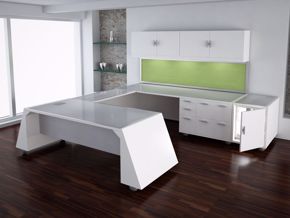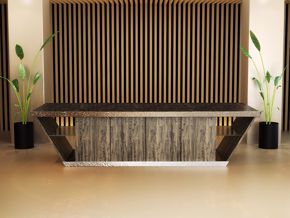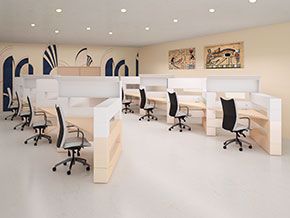Words are not enough to effectively communicate your brand
People are wired to understand the world around them quickly by what they see. Before we learn how to communicate by language, we understand by what we see. That’s why communication of your brand visually is so powerful, even more important than what you have to say. In today’s business world we crave information that we can comprehend fast. For that reason the world as a whole is becoming more and more visual. Effective brand communication is not something that’s thrown together by a collection of random words and pictures. It is thought out and organized from top to bottom, inside and out of the office, in a fashion designed with the helpful intent of guiding the customer to a solid metal image.
Why reception area visuals connect with our brains
Our conscious and subconscious wiring rapidly identifies stores and recalls images without even realizing it, and stores them for memory recall as needed. Whether for critical recall (stop lights, fire alarms, etc.) or passive decision-making, memory influences our impressions. Using visualization in our reception area to synthesize ideas is not only an effective way to communicate our brand; it’s something that our brains find creative and refreshing.
The value of reception area aesthetics
Being that we have about eight seconds (the average attention span) we need to communicate something to capture our visitor’s attention immediately. That’s where aesthetics come in. A well-designed reception area is exciting, eye-catching and engaging. Like any strong visual, it captures your attention long enough to arouse interest. Many people think aesthetics are superficial, but they are not; its specific job is to capture attention. Your first job in designing your reception area is to do just that.
Reception area aesthetics is not enough
Interpretation of the relevance between object and meaning without major difficulty is what our brains look for when trying to comprehend design. By finding ways to visually represent your brand message in your design detail as opposed to describing it, is the difference between having your message understood rapidly, obviously and enjoyably and having to labor to understand it, or worse still, having it overlooked.
Remembering your brand
Designing your workplace with visualization triggers in mind, have your visitors recall things from their long-term memory which makes for really fast mental connections to information stored previously. This method of association helps impregnate the message in their brain.
Getting your message across instantly
Our brain instantly dissects and associates things that are different from the rest.
| A | A | A | A | A | A | A |
| A | A | A | A | A | A | A |
| A | A | A | A | A | A | A |
The example above illustrates how the eye naturally focuses on things that stand out. Separating and calling out creatively by color, shape, size etc., key visual components to your message like: a collage of testimonial letters, color coordinated parts you manufacture, an artful wall with scripted, colorful words the highlight company values.
Visually telling your story
People like stories. Visually telling it is a way to solicit interest in key benefits you company offers. Sometimes the story is in company history and development, sometimes it’s about the way you process your goods and services and other times it can be comparisons in the marketplace or even before and after. Written or oral telling is a long boring process. Artfully showing pictures, graphic displays or even furniture detail are colorful ways to get your message across.
No matter whom you are or what you do, you have a unique story to tell. There are many ways to visually communicate your story. However you choose to get your message across it is important to remember, your company is not average and nothing about your reception area should communicate that you are. So design it with your company’s personality.









